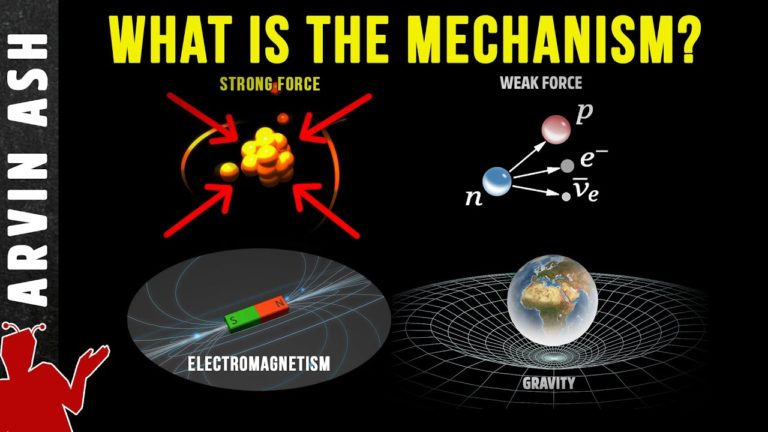Why & How do the 4 fundamental forces of nature work?
How does a force between particles work? What causes an attraction or repulsion? Why does electromagnetism and gravity have infinite range, but the strong and weak force have a small range? Quantum chromodynamics (QCD), and Quantum electrodynamics (QED) are discussed.
All forces, except maybe gravity, are mediated by force carrying particles called gauge bosons. They operate by same mechanism: the exchange of virtual bosons. Photons carry the electromagnetic interaction, gluons carry the strong force, and the W and Z bosons for the weak force. The graviton would be the boson for gravity. Real versions of these gauge bosons have been observed, except the graviton.
What is a virtual particle? These exist due to the Heisenberg uncertainty principle. The uncertainty principle states that the change in energy times the time of a particle’s existence must be equal to Planck’s constant over 4*pi. This means virtual particles can exist as long as its for a really short time.
How does an exchange of these virtual particles result in a force? Imagine two people on a boat throwing basketballs at each other. As the two throw the balls away from each other, there is a transfer of momentum that occurs. This moves the boats apart. For attraction, the same two boaters are holding a boomerang. When one person throws the Boomerang, it circles back such that the other person catches it facing the opposite direction. The boats pull closer together.
When two similar charges are near each other, quantum theory shows that the exchange of virtual particles create an energy gradient between the two particles so that there is a higher energy state between the charged particles. Since particles want to be exist at their lowest energy state, they move apart. The opposite happens when dissimilar charges are near each other. A lower energy state is created between the two particles.
Electromagnetism has an infinite range because photons have zero mass. But the Gluon is also massless, so why does the strong force have a short range? This involves quantum chromodynamics or QCD.
The main difference between photons and gluons is that photons are electrically neutral so they do not interact with themselves. Gluons however carry a charge so that they interact with each other. This limits their range because they form a kind of link or rubber band with not only the quarks, but also with themselves. Gluons are electrically neutral but carry a color charge. Color is just a metaphor to describe a new kind of property of particles.
There are three kinds of color charges, Red, green and blue. Color charges have to be balanced by either a combination of the three colors to make a neutral white, or by color-anticolor pairs. Electromagnetism and gravity get weaker as objects get farther apart but the force between two quarks gets stronger as they get further apart.
It works like a rubber band. If you try to pull two quarks apart the force between them gets very strong. This tends to pull a quarks back into the proton or neutron. However, if you knock a quark very far away from the neutron or proton, the energy becomes so large that the rubber band-like force created by gluons breaks. And the energy released creates a new quark/ani-quark pair, called a meson. And these are the residual particles that mediate the velcro-like force that keeps protons and Neutrons tied together in the nucleus.
How does the weak force work? It is more like a power that certain particles have to turn themselves into different particles. A neutron is composed of two down quarks and one up quark. A proton is composed of two up quarks and one down quark. Any neutron can turn into a proton by converting one of its down quarks to an up quark. It does this by emitting a negatively charged W boson. This turns the down quark into an up quark, changing the particle from a neutron to a proton. Since the W minus boson carries a negative charge, the Neutron now becomes a proton with a positive +1 charge to balance charges. The reason this interaction has a very short range is because the W boson is quite massive, so it just doesn’t survive for very long.
Since gravity has infinite range, its carrier particle the Graviton should also have no mass. Quantum gravity is hard because at quantum scales, It is overwhelmed by other three forces. For now, gravity treated in mostly in geometric terms using GR.
Do not forget to share your opinion with us to provide you with the best posts !





0 Comments